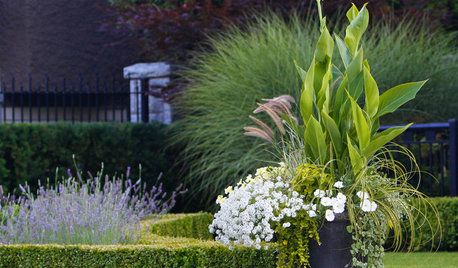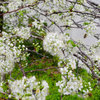Need help with growing healthy cannas
gardenbear49
9 years ago
Related Stories

GARDENING GUIDESGreat Design Plant: Cannas
Easy to grow and maintain, these showy, colorful plants are perfect for beginning gardeners
Full Story
GARDENING GUIDESHow to Keep Your Citrus Trees Well Fed and Healthy
Ripe for some citrus fertilizer know-how? This mini guide will help your lemon, orange and grapefruit trees flourish
Full Story
HEALTHY HOME16 Ideas for a Healthy, Feel-Good Home
Making these small tweaks and bigger shifts at home can help you thrive everywhere you go
Full Story
EDIBLE GARDENSThe Enticing Garden: How to Grow Bananas
Sweeten your dining table with surprising flavors of banana cultivars while adding tropical flavor to your garden
Full Story
SUMMER FRUITS AND VEGETABLESSummer Crops: How to Grow Beans
Grow your own beans for amazing variety and healthy, convenient produce all summer
Full Story
HEALTHY HOME12 Ways to Set Up Your Kitchen for Healthy Eating
Making smart food choices is easier when your kitchen is part of your support team
Full Story
GARDENING GUIDESHow to Prep Your Ground for a Healthy New Lawn
Seed or sod that falls on weedy, lumpy soil is a wasted effort. Follow these steps to ensure that your new lawn will thrive
Full Story
GARDENING GUIDESHow to Keep Your Trees Healthy
Ensure your trees’ vigor for years to come with these tips for protecting roots, watering effectively and more
Full Story
HOUSEPLANTS8 Essentials for Healthy Indoor Plants
Houseplants add so much to our homes — and can thrive when grown in the right conditions. Keep these tips in mind
Full Story
TREESHow to Buy Healthy Trees and Shrubs
A healthy young plant with a strong form is more likely to do well in your yard. Here’s what to look for at the nursery
Full StoryMore Discussions









katkin_gw
garyfla_gw
Related Professionals
Citrus Heights Landscape Architects & Landscape Designers · Jackson Landscape Contractors · Arlington Landscape Contractors · Roseville Landscape Contractors · Arbutus Decks, Patios & Outdoor Enclosures · Inwood Decks, Patios & Outdoor Enclosures · Saint Louis Park Decks, Patios & Outdoor Enclosures · Urbana Decks, Patios & Outdoor Enclosures · Rosemont Siding & Exteriors · Cedar Park Siding & Exteriors · Cherry Hill Siding & Exteriors · Dumont Siding & Exteriors · Glen Burnie Siding & Exteriors · Kenosha Siding & Exteriors · North Highlands Siding & Exteriorsblulagoon
katkin_gw
tomncath
tomncath
katkin_gw
tomncath
wisconsitom
gardenbear49Original Author
wisconsitom
sultry_jasmine_nights (Florida-9a-ish)
wisconsitom
bossyvossy
katkin_gw
sultry_jasmine_nights (Florida-9a-ish)
wisconsitom
dbarron
gardenbear49Original Author
ruth12342
katkin_gw
blulagoon